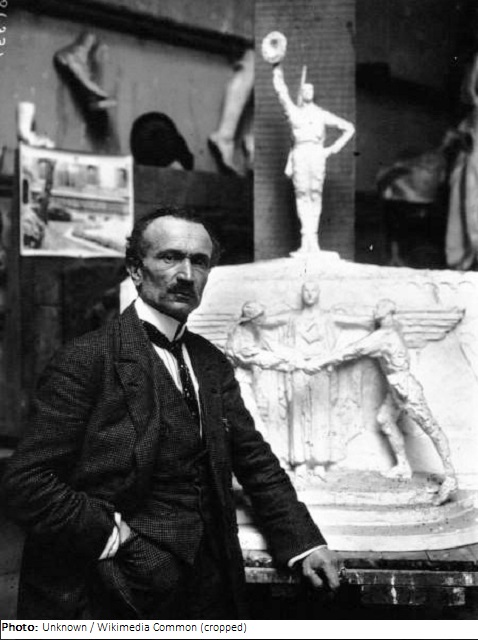Jean Boucher

Biographical information
| Roles | Referee |
|---|---|
| Sex | Male |
| Full name | Jean Marie Théodore Joseph•Boucher |
| Used name | Jean•Boucher |
| Born | 20 November 1870 in Cesson-Sévigné, Ille-et-Vilaine (FRA) |
| Died | 17 June 1939 (aged 68 years 6 months 27 days) in Paris XIVe, Paris (FRA) |
| NOC |  France France |
Biography
Jean Boucher first learned the trade of a locksmith, but soon took evening classes at the École des Beaux-Arts in Rennes. He later studied there and then at the École des Beaux-Arts in Paris. In 1893 he won the 2nd Prix de Rome. During World War I, he was an infantry sergeant and suffered gas poisoning at the front. He ended the war with the Croix de Guerre at the rank of lieutenant. Later, he was appointed professor at the academy in Paris. In 1904 he was made a knight and in 1914 an officer of the Legion of Honor. In 1936 he was elected to the Académie des beaux-arts.
Boucher mainly created groups of figures in marble and bronze and received the National Prize in 1901 for the allegorical representation Antique et moderne. He produced numerous monuments and busts as well as portrait reliefs of contemporary figures for public places, including the 1913 statue Victor Hugo en exil on the island of Guernsey, which is one of his major works. The monument L’Union de la Bretagne et de la France (The Union of Brittany and France), designed in 1911, on the facade of Rennes City Hall, was destroyed by Breton separatists in 1932.
The design of Boucher’s early work evidenced influences of realism, romanticism, and impressionism. In his late works, he turned to a more austere design. He was also involved in restoring the cathedral in Dole.
Referee
| Games | Sport (Discipline) / Event | NOC / Team | Phase | Unit | Role | As | |
|---|---|---|---|---|---|---|---|
| 1924 Summer Olympics | Art Competitions |  FRA FRA |
Jean Boucher | ||||
| Sculpturing, Open (Olympic) | Final Standings | Judge |